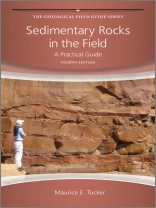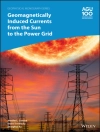This fourth edition builds on the success of previous editions and
for the first time is produced in full colour throughout with
improved photos and diagrams. It retains its popular pocket size
and is an essential buy for all students working in the field.
The text shows how sedimentary rocks are tackled in the field
and has been written for all those with a geological background. It
describes how the features of sedimentary rocks can be recorded in
the field particularly through the construction of graphic logs. In
succeeding chapters the various sedimentary rock types, textures
and structures are discussed and shown how they can be described
and measured in the field. There are expanded sections on trace
fossils and volcaniclastics along with updated reference list.
Finally a concluding section deals briefly with facies
identification and points the ways towards facies interpretations,
and the identification of sequences and cycles.
Key Features:
* Full colour throughout with improved photos, figures and
diagrams in a modern layout.
* Complete revision and update of best selling textbook which is
part of the highly successful Field Guide series.
* Expanded sections on trace fossils and volcaniclastics along
with updated reference list.
* Handy pocket size with laminated cover.
* Includes supplementary website with downloadable logging sheets
for fieldwork activities.
สารบัญ
Preface ix
Acknowledgements xi
1 Introduction 1
1.1 Tools of the Trade 1
1.2 Other Tools for the Field 3
1.3 Use of GPS (Global Positioning System) in Sedimentary Studies 4
1.4 Safety in the Field and General Guidance for Fieldwork 5
2 Field Techniques 9
2.1 What to Look For 9
2.2 The Approach 11
2.3 Field Notes 12
2.4 Graphic Logs 13
2.5 The Logging of Cores 19
2.6 Lithofacies Codes 20
2.7 Collecting Specimens 22
2.8 Presentation of Results 22
2.9 The Way-Up of Sedimentary Strata 24
2.10 Stratigraphic Practice 26
3 Sedimentary Rock Types 35
3.1 Principal Lithological Groups 35
3.2 Sandstones 38
3.3 Conglomerates and Breccias 44
3.4 Mudrocks 46
3.5 Limestones 47
3.6 Evaporites 59
3.7 Ironstones 63
3.8 Cherts 65
3.9 Phosphate Deposits (Phosphorites) 67
3.10 Organic-Rich Deposits 68
3.11 Volcaniclastic Deposits 70
4 Sedimentary Rock Texture 85
4.1 Introduction 85
4.2 Sediment Grain-Size and Sorting 85
4.3 Grain Morphology 89
4.4 Sediment Fabric 91
4.5 Textural Maturity 94
4.6 Texture of Conglomerates and Breccias 95
4.7 Induration and Degree of Weathering 97
4.8 Colour of Sedimentary Rocks 99
5 Sedimentary Structures and Geometry of Sedimentary Deposits 105
5.1 Introduction 105
5.2 Erosional Structures 105
5.3 Depositional Structures 111
5.4 Depositional Structures of Limestones (Including Dolomites) 145
5.5 Post-Depositional Sedimentary Structures 157
5.6 Biogenic Sedimentary Structures 172
5.7 The Geometry of Sedimentary Deposits and Lateral Facies Changes 187
6 Fossils in the Field 193
6.1 Introduction 193
6.2 Fossil Distribution and Occurrence 197
6.3 Fossil Associations and Diversity 202
6.4 Skeletal Preservation (Taphonomy) and Diagenesis 206
7 Palaeocurrent Analysis 211
7.1 Introduction 211
7.2 Palaeocurrent Measurements 211
7.3 Structures for Palaeocurrent Measurement 217
7.4 Presentation of Results and Calculation of Vector Means 220
7.5 Interpretation of the Palaeocurrent Pattern 222
8 What Next? Facies Identification and Sequence Analysis 225
8.1 Introduction 225
8.2 Facies Analysis 225
8.3 Facies, Facies Models and Depositional Environments 227
8.4 Cycle Stratigraphy and Sequence Stratigraphy 228
Recommended Reading 263
Index 270
เกี่ยวกับผู้แต่ง
Maurice Edwin Tucker is a leading British sedimentologist, specialising in the field of carbonate sedimentology, more commonly known as limestones. From 1993 to 2011 he held the position of Professor of Geological Sciences at the University of Durham, and from 1998 to 2011 was Master of University College, Durham.












